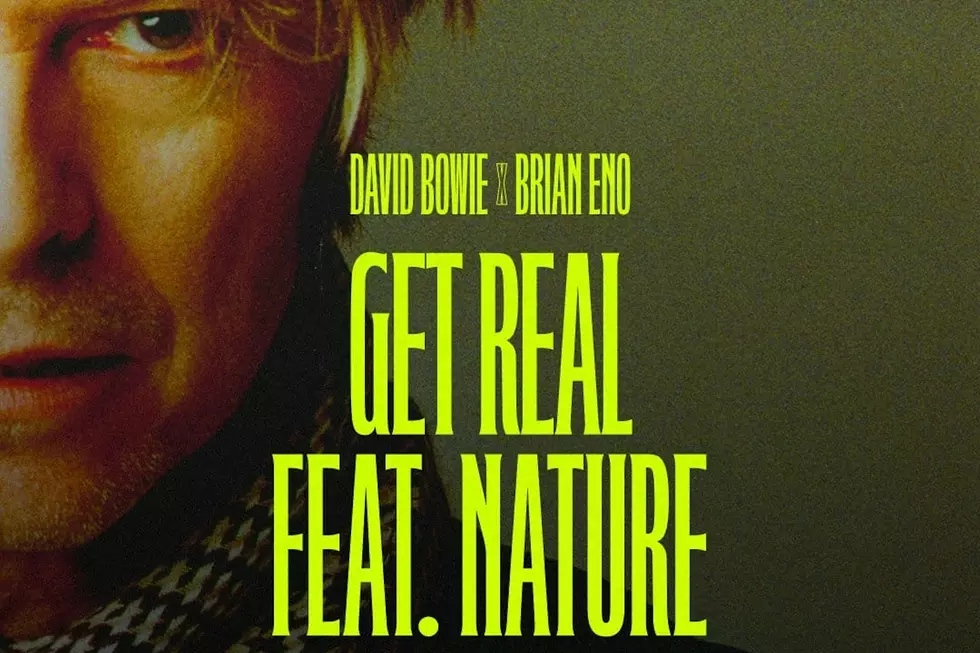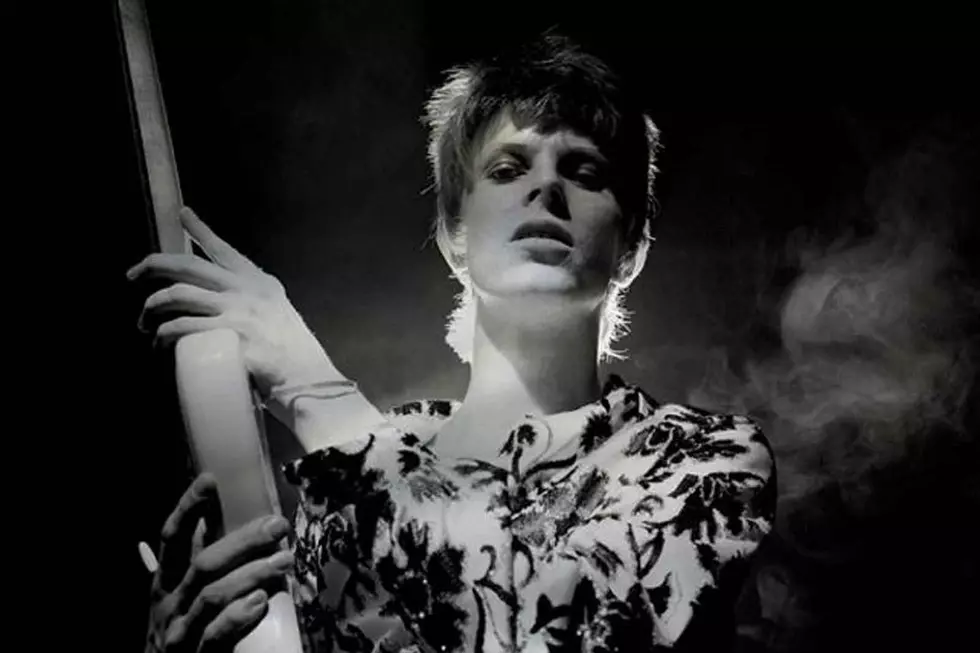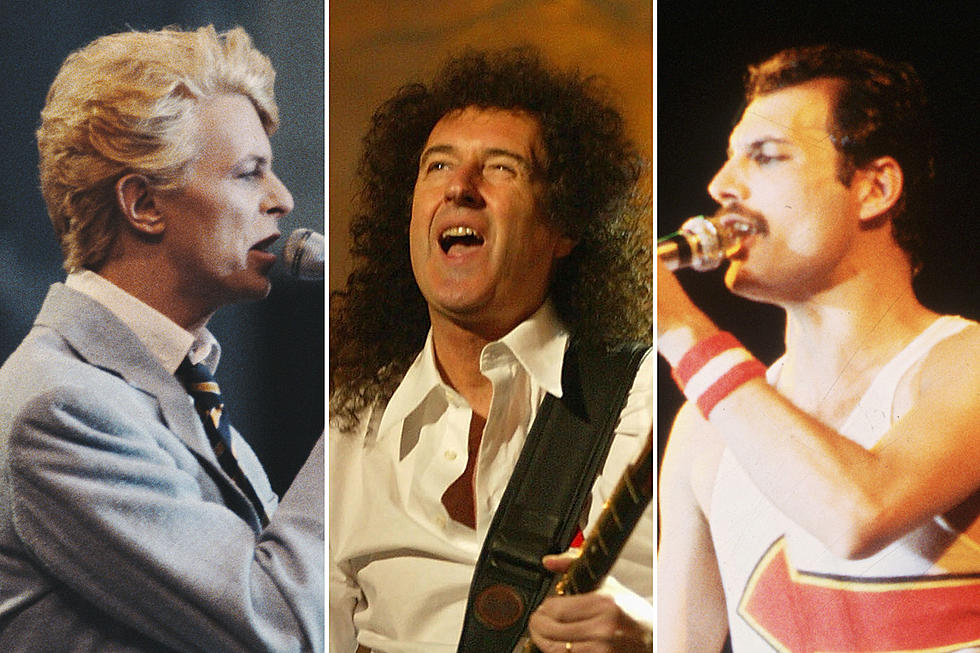
David Bowie’s Death: One Year Later
On Jan. 8, 2016, David Bowie released Blackstar.
A revelatory album, Blackstar abandoned mainstream aspirations. Backed mostly by a relatively unknown pack of New York Jazz musicians, Bowie celebrated his 69th birthday by unveiling a record that warped his already often-strange sounds into jolting and creeping compositions. Over just seven songs (including the 10-minute title track), the group explored eerie horn lines and electronic washes, syncopation and New Wave touches, hard bop saxophone and freak-rock crescendos. The critical consensus: “Bowie’s joy in emphasizing the art in art-pop is palpable and its elegant, unhurried march resonates deeply.”
On Jan. 10, 2016, David Bowie died.
The Thin White Duke passed away before we could even process the feral genius of his farewell statement.
The timing fit the icon's aesthetic: Evolve before they can nail you down; zig when they expect you to zag. Most fans hadn’t even digested The Next Day -- the 2013 comeback album he began by shouting, “Here I am, not quite dying/My body left to rot in a hollow tree” on the title track. How were we expected to wrap our tiny minds around Bowie singing “Look up here, I’m up in heaven” on “Lazarus?” (If you haven’t seen the video, sit down with a stiff drink and hold on for dear life.)
Watch David Bowie's 'Lazarus' Video
Producer Tony Visconti, who worked with Bowie off and on from 1969’s “Space Oddity” to Blackstar, summed up Bowie’s style and personality just a day later with a Facebook post that read, “He always did what he wanted to do. And he wanted to do it his way and he wanted to do it the best way. His death was no different from his life -- a work of Art. He made Blackstar for us, his parting gift. I knew for a year this was the way it would be. I wasn’t, however, prepared for it. He was an extraordinary man, full of love and life. He will always be with us. For now, it is appropriate to cry.”
At the time, Visconti was working with Spiders from Mars drummer Woody Woodmansey on a tour that celebrated Bowie’s early catalog. Billed as Holy Holy, the band’s timing of the tour was spooky but the catharsis was wonderful.
“I don’t expect everyone to be happy and smiling,” Visconti said in front of a packed Wilbur Theatre in Boston two weeks after Bowie’s death. “I have cried onstage a couple times after that horrible event. So let it all hang out, whatever emotion you might feel.” Letting it all hang out has been a theme of Bowie tributes over the past 12 months. Barely holding back tears, Annie Lennox made a forceful, emotional case for Bowie’s unparalleled legacy at the 2016 Brit Awards in February.
“It’s almost impossible to mention Bowie’s name in the past tense,” she said. “There was no one and nothing else like him. He was truly unique.” Lorde followed Lennox’s words with a tremendous take on “Life on Mars?” with his former tour band including guitarist Earl Slick, who worked with Bowie since the Diamond Dogs tour in 1974.
Also just a month after Bowie’s death, Lady Gaga tried to cram all of the Starman’s changes into a single performance at the 2016 Grammys. With an assist from guitarist and Bowie cohort Nile Rodgers, Gaga smashed an impressive ten song medley into six minutes -- the selections: “Space Oddity,” “Changes,” “Ziggy Stardust,” “Suffragette City,” “Rebel Rebel,” “Fashion,” “Fame,” “Under Pressure,” “Let's Dance” and “Heroes.”
And the tributes kept coming. Bruce Springsteen and the E Street Band covered “Rebel Rebel” at a January show in Pittsburgh. Sleater-Kinney’s New Year’s Eve show in San Francisco also featured a take on “Rebel Rebel” with help from openers the Thermals and Britt Daniel of Spoon. Phish honored one of their musical heroes with a full performance of the Ziggy album on Halloween night.
Why do artists as wildly diverse as Lady Gaga, Springsteen and Phish love Bowie? It’s not because of the space suits and orange hair. (Okay, that might be part of it ... )
Bowie’s changes made him stand out. But his songs gave him staying power.
The tag “the ultimate rock ‘n’ roll chameleon” fits Bowie. His sounds and visions evolved with every album (sometimes mid-album or song -- see the title track to “Station to Station” or “Aladdin Sane” or even “Blackstar”). But going from rock to New Wave or trading a wig for a white suit didn’t keep fans listening with every release. His songwriting captured us.
“Changes” and the eight-minute metal epic “The Width of a Circle” seem to come from different planets. The hip, smart pop of “Modern Love” and "Lazarus" hit the ears in radically different ways. And yet, Bowie crafted each of these songs with his distinct balance of skill, genius and experimentation.
Bowie was a soul singer, punk provocateur, art-rock weirdo, electronic music innovator and a folkie. Bowie was Kiss before Kiss, Talking Heads before Talking Heads and Duran Duran before Duran Duran. Then, as soon as the mainstream caught up, he moved on leaving behind a catalog of killer tunes.
On his 50th birthday, he told Madison Square Garden, “I don’t know where I’m going from here. but I promise it won’t be boring.”
Bowie could have said it on birthday 21 or 69 and it would have been equally true.
As 2016 rolled on, losing icons became an unhappy reality. But in so many deaths we were pulled back to Bowie. When Prince died we saw the echo of Bowie’s avant-garde legacy in his Purple Majesty -- Prince fearlessly absorbed white and black influences as Bowie did before him. When news broke that George Michael was gone, we were again dragged back to Bowie and his talent for sneaking social consciousness into pop -- the video for “Let’s Dance” is a simple, direct statement against racism; Michael’s video for “Praying for Time” pushes a similar plea for equality over a catchy smash single.
Watch David Bowie's 'Let's Dance' Video
More tributes will come -- a 70th birthday celebration led by buddy Gary Oldman recently took place at the O2 Academy in Brixton. Hopefully they will be more than a few covers at concerts. Hopefully the glory of Blackstar and the weirdness of the Berlin trilogy will inspire pop stars and indie acts to be more creative, more fearless in pursuit of their visions. Sure, this might lead to some silly stuff (“Dancing in the Streets,” with Mick Jagger) or pretentious moments (“This Is Not America,” with the Pat Metheny Group). But more often than not it will have artists battling the mediocrity that always threatens to take over mainstream music.
Remember, rockers writing songs in 2017, your new mantra is “What would Bowie do?” The answer: Make it more spooky, funky, outlandish.
David Bowie Year by Year: 1965-2016 Photographs
More From Ultimate Classic Rock









